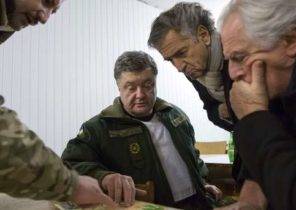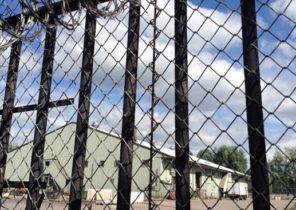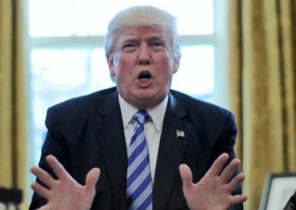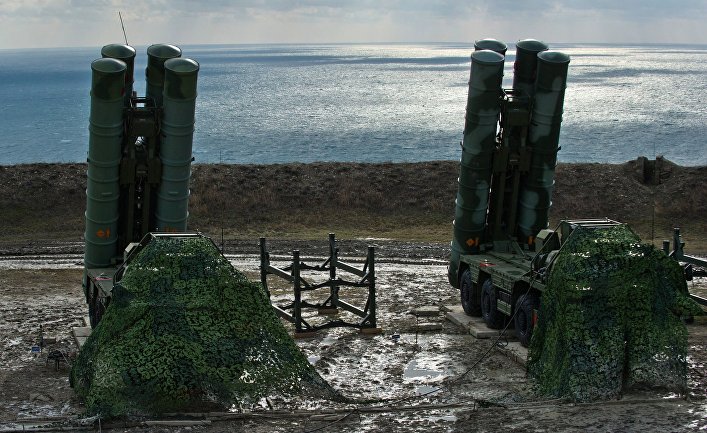
Atlantico: on Thursday in response to the arrival of American soldiers and tanks in the framework of the expansion of the military contingent of the Russian authorities began to deploy missile systems s-400 around Moscow. How should one regard such steps?
Mikael Lamber: the Deployment of s-400 is a symbolic response to the presence of NATO troops in Poland and the Baltic States. NATO troops are there because of concerns about military intervention by Moscow in the region, but the Kremlin, paradoxically, sees them as a threat in this part of Europe, where Russia’s position is weakened after the end of the cold war.
In other words, each side fears that the other is planning a military invasion, but in fact, most likely, nobody wants military conflict.
A decision to deploy s-400 near Moscow, not St. Petersburg is symbolic in the sense that no NATO aircraft can not enter the territory of Russia and especially to reach the capital. In addition, the choice of the s-400, the most advanced multi-purpose missile systems of the Ministry of defence, must show that the country remains a world power that is able to compete militarily with the great European and American powers.
In addition, the presence of the s-400 becomes a great advertising for this going for export products, as well as its last version of the s-300. Russia became the third largest exporter of weapons in the world, although France and managed to bypass it thanks to the sale of Rafale to the Indian government and Australian submarines in 2016.
Therefore, deploying s-400 the Russian capital is intended to spur sales priority partners like China, India, Central Asian countries, Armenia (Rasko strengthening of the Eurasian economic Union), Iran, and Syria. This production is high level to satisfy the demands of these countries and has benefits such as affordable price (the same applies to s-300) and mobility. Strengthening the air defense system allows the authorities to avoid the necessity of constant modernization of the air force and follow an effective defensive strategy against US. Therefore, the placement of missiles in Moscow provides an accessible way to remind about the quality of products of the Russian defense industry.
— Judging by the sales figures of Russian weapons, how can we assess the impact of international politics, Vladimir Putin, and in particular intervention in Syria on the export figures?
— The war in Syria has brought tangible results in the market of weapons, which steadily increases with the end of the cold war, in particular due to the rise of China. The European powers are investing in the sector less than before (on average 1-2% of GDP for member countries of the European Union). Germany and Poland are the only major countries that are in the upgrade phase weapons, but the scale of the programs is still too small. Britain and France seriously affected by the financial crisis of 2008 and reduced investment in the army, particularly the air force, which are undoubtedly the most expensive part of it.
Europe is a special case because China consistently invests in the modernization of its armed forces, which stimulates the sale of Russian and French weapons (due to us embargo) and the development of local production. The Chinese technique usually borrows from Russian or American technologies like the aircraft of the fifth generation F-22 and F-35, however, the past decade has witnessed strong growth of Chinese innovation in the field of high technology weapons.
Significant growth of sales of Russian and French arms is also observed in the middle East, particularly in Saudi Arabia and Qatar. In the coming years is to wait for the signing of major contracts in Finland, the Baltic States and Belgium who want to upgrade parks of fighters. Update canadian fighter also opens considerable prospects of sale that reserves the USA. The world’s largest market, the us, is not available for other countries, especially after the election of Donald trump.
In such a situation, when USA is showing extreme protectionism, and Europe is modernizing, not even considering the option of Russian weapons, the middle East, China and India are extremely important regions for Moscow, whose economy depends for the most part from sales of gas and weapons. Thus, the conflict in Syria has provided an opportunity to test new weapons in real conditions, that is a strong argument in sales. In addition, the conflict has pushed to modernize the existing Ministry of defense weapons, which in some cases were created under the Soviet Union. In particular we are talking about the gradual replacement of the old su-24 on a more modern technique that allows you to approve the superpower status of Russia.
After the Kremlin’s intervention in Syria’s interest in Russian arms show all middle Eastern countries (not to mention the monopoly on deliveries to Syria in the future). The Russian government has talked about his guns through the mainstream media (RT and TASS) and the social network during the conflict. This applies in particular to personnel strikes from helicopters against the Islamic state and rocket attacks from the Caspian sea that can be considered successful taking into account the testing of a number of weapons. In addition, Russia was able to gather information about the coordination strategy of the countries-members of NATO and their main planes (F-16, Rafale and Eurofighter) in Syria that will allow it to improve own technique for dealing with them. Overall, Russia came out of just the winner: she used old Soviet equipment, but advertised new and launched its mass production.
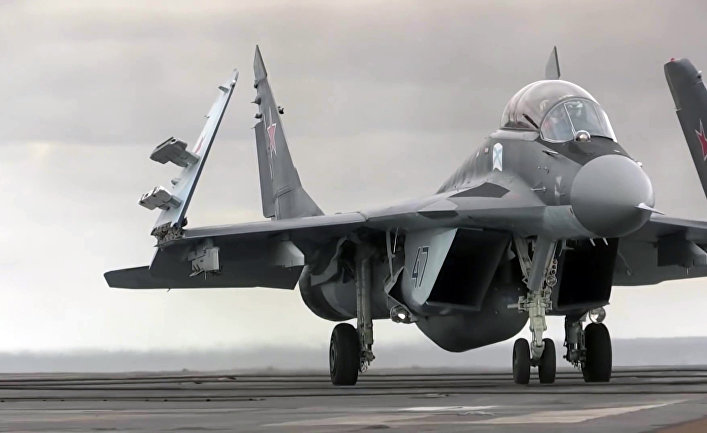 © RIA Novosti, the Russian defense Ministry | go to photobacteria MiG-29 videoconferencing before takeoff from the deck of a heavy aviabearing cruiser “Admiral Kuznetsov”
© RIA Novosti, the Russian defense Ministry | go to photobacteria MiG-29 videoconferencing before takeoff from the deck of a heavy aviabearing cruiser “Admiral Kuznetsov”
Anyway, to evaluate the sales not easy because of the opacity of information from the Russian army and modernization programs that span several years. The same fog covers and partners who will make strategic decisions for five to ten years. In the field of arms sales stretched several decades, however, the war in Syria, of course, was for Russia a perfect opportunity to regain primary diplomatic role in the UN and restore the fallen prestige of his army.
— Which countries have shown or are showing interest in Russian arms on the background of intervention in Syria? Did such a show of force Russia to take away market share in some other major producing countries and arms exporters?
The first interest was shown by Syria due to Western embargoes and the unconditional support of Bashar al-Assad by Russia. There is now a Russian monopoly on arms sales. Anyway, to be interested as well the countries of the Maghreb and the Middle East like Algeria, Iran and Saudi Arabia. Israel uses both Russian and American weapons for pragmatic reasons. The advantage of Russia that it can offer reliable weapon, and at an affordable price, as for the soldiers, and population. In addition, it has high-tech products like T-50 for the wealthy countries and the old Soviet technology, which can perfectly serve in the region.
At the same time, Americans and Europeans are unable to offer equally available weapons and can sell only high-tech products to countries that do not necessarily need it.
That lack strategic sequence is well known to analysts and would explain the success of certain products, like the Swedish Grippen in Brazil. Selling arms is very important to find the right approach to the customer, and Russia is now more pragmatic and multi-directional, which is a strategically correct approach, as long as China starts to compete with it (this is probably worth the wait to the beginning of the next decade).
However, this year Russia passed forward by France, which moved to the second position (albeit far behind the US) including through the sale of submarines to Australia. At the same time, Paris has missed an opportunity for more active promotion of the Rafale in Canada, in particular through its relations with Quebec. Thus he lost the contract on more than 50 billion canadian dollars. In any case, he bypassed Moscow, whose sales grew in quantitative terms but not in financial due to the fall of the national currency against the dollar and the Euro. In 2017 it will bet on the sale in the Eurasian Union, China and India. That is, the conflict in Syria, of course, gives an advantage, but its effect can be assessed only several years.



